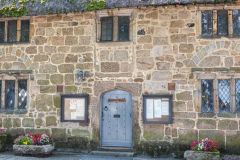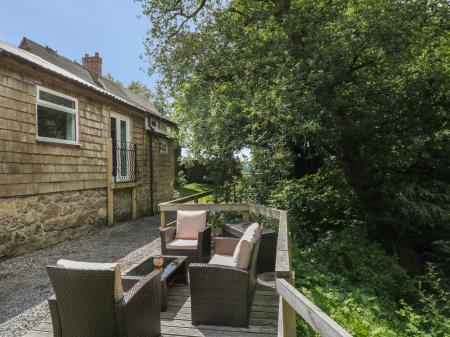
History
The Chagford area has been inhabited since at least 2000 BC, but the town really grew in size and importance during the medieval period, at first due to the wool trade and later as a centre of tin mining. In 1305 its importance as a centre for mining was recognised when it was made a stannary town; a place where tin was brought to be weighed, graded, and traded.
There were only four stannary towns in Devon (the others being Plymouth, Ashburton and Tavistock) so that gives you an idea of just how important Chagford was during the medieval period.

The wool trade shaped the status of Chagford in the 18th and 19th centuries. Wool was brought to the town to be washed and purified, then dried on timber racks on Rack Hill. On Store Street is Moorlands, a former woollen factory that supplied the East India Company and sent horse blankets to the British military during the Crimean War. Moorlands is now converted into private flats.
A near neighbour to Moorlands is Lawn House, the former home of John Berry, a wealthy mill owner who was said to be 'second only in the County in importance to the Earl of Devon'.
As the importance of the wool trade waned Chagford became a popular centre for tourism, with hotels, B&Bs and holiday cottages serving visitors to Dartmoor. One of the inns established to cater to the influx of Victorian tourists was the Chagford Inn, built in 1844.
St Michael's Church dates to the 13th century, with many 15th century additions. The interior highlight is a series of painted medieval roof bosses, including one in the shape of 'three hares', the traditional symbol of Cornish tin miners.
In the churchyard is a memorial to James Perrott, a famous Dartmoor guide who led visitors across the moors. Among Perrott's clients were the novelists Charles Dickens, Charles Kingsley, and RD Blackmore.
Perrott is best-known for inventing 'letter-boxing', the popular pastime that involves leaving a weatherproof box in a public place and leaving clues to the location so that others can search for it. Perrott's first 'letter box' was a bottle that he left at Cranmere Pool in 1854. People who found the bottle would leave their calling cards behind.

Two Tragic Shootings
In the church is a memorial to Mary Whiddon, who was shot dead by a jealous suitor as she left the church after getting married in 1641. A tradition has evolved whereby new brides lay flowers on Whiddon's grave. Author RD Blackmore is thought to have used Whiddon's tragic tale as inspiration for his novel Lorna Doone. Mary Whiddon's ghost is said to linger in Whiddon Park Guest House and by tradition, any bride getting married from the Three Crowns will encounter the ghost.
Another tragic shooting occurred during the Civil War when the poet and MP Sydney Godolphin was shot in a skirmish between Parliamentarians and Royalists. Mortally wounded, he was carried into the porch of the Three Crowns Inn on High Street, where he died. His ghost is said to haunt the inn.
The 16th-century manor house is now a picturesque inn. Also 16th century is Endecott House, on the market square. Endecott House was a former church house and village school and is named for John Endecott, a Pilgrim Father and governor of the Massachusetts Bay Colony. Endecott lived in Chagford for a time before voyaging to the New World.

Beside Endecott House is the Three Crowns Inn, an early Tudor building once owned by Sir John Whiddon, the father of Marry Whiddon (see above).
In the centre of the Square is Chagford's most distinctive building, the octagonal Market House, built in1862. Smelted tin was brought here twice a year to be assayed, taxed, stamped, and sold. On the south side of the Square is Bowden's ironmongers.
In the back of the shop is a small museum showing what an old ironmongers shop was like. Bowdens was the centre of local attention in 1922 when they built the first radio valve set in Devon. Queues of onlookers gathered to hear this historic 'first'.
On Southcombe Street, a short stroll from the Square, is Bishop's House, a picturesque late medieval cross-passage house under a thatched roof. The house takes its name from Bishop Branscombe, who dedicated St Michael's Church in 1261. Over the porch is an attractive oriel window.








 We've 'tagged' this attraction information to help you find related historic attractions and learn more about major time periods mentioned.
We've 'tagged' this attraction information to help you find related historic attractions and learn more about major time periods mentioned.




